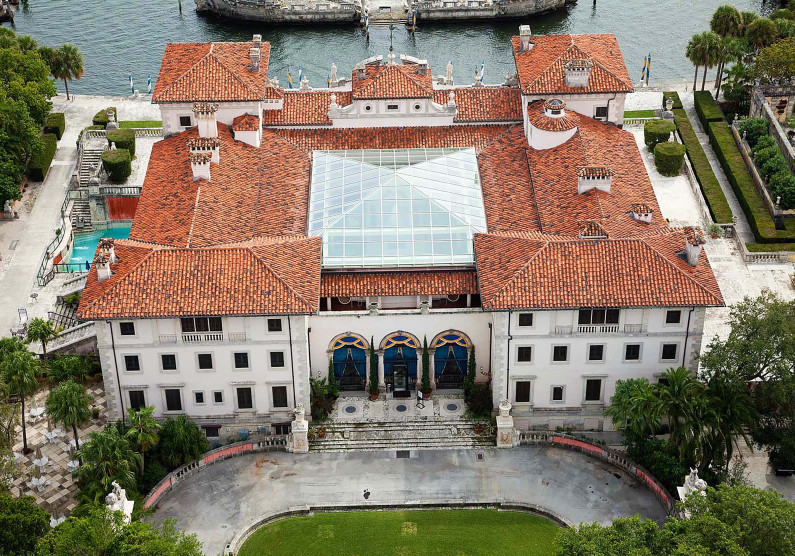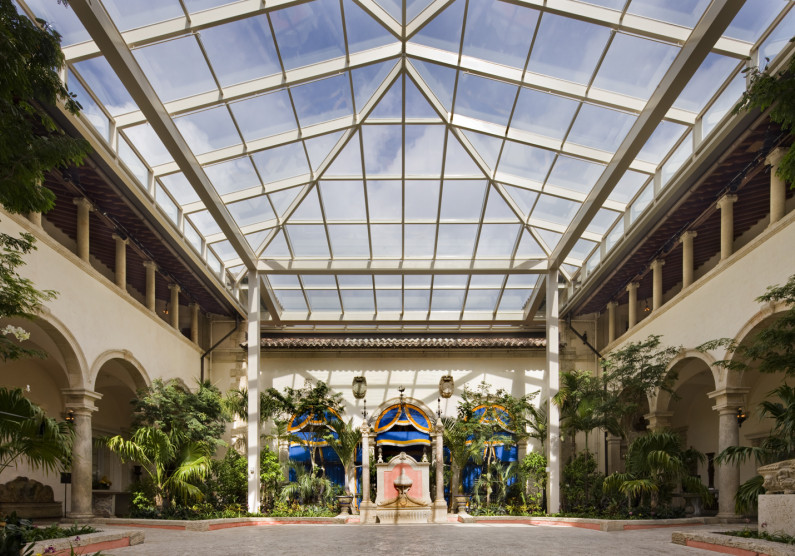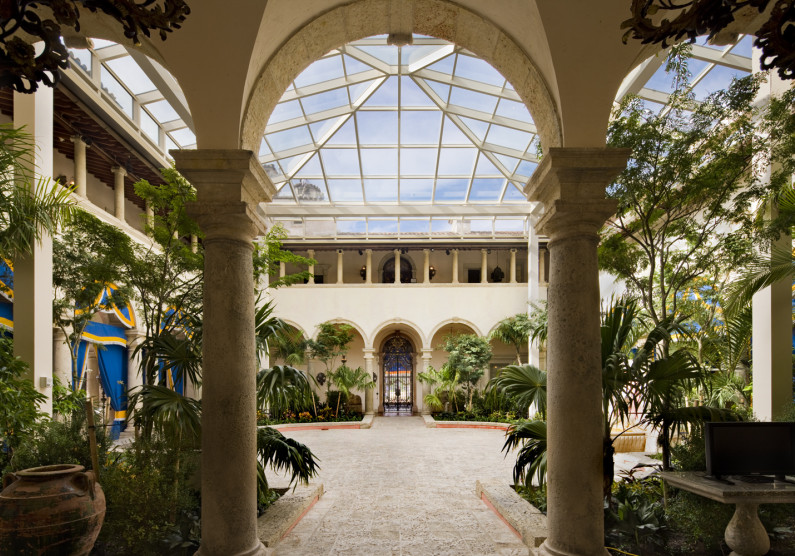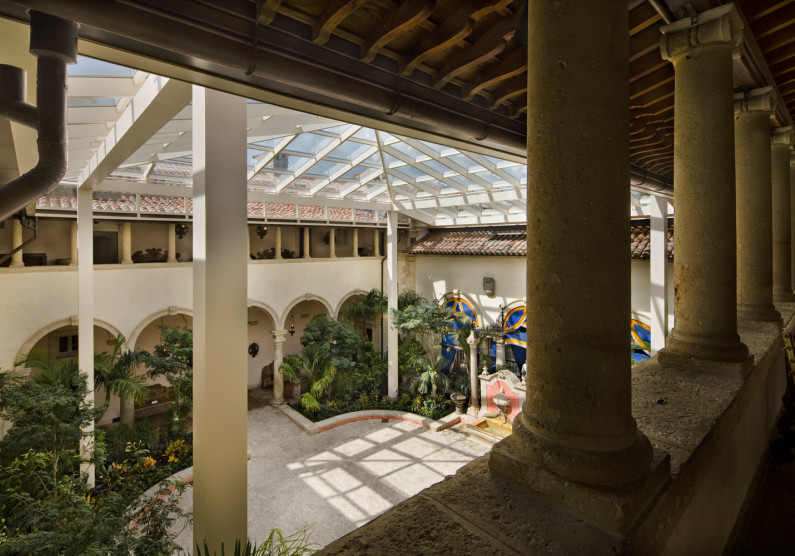Owner
Vizcaya Museum & Gardens
Project Size
13,800 SF
Architect
MC Harry & Associates
Completion
Completed

Owner
Vizcaya Museum & Gardens
Project Size
13,800 SF
Architect
MC Harry & Associates
Completion
Completed
Vizcaya Museum’s smoked-glass courtyard skylight was installed in 1986. Not only had it developed serious leaks, but it also protruded significantly above the villa’s roof, was framed with dark steel, and failed to confer the feeling that occupants were in an outside courtyard, which was the intention of the original owner, James Deering. The new skylight is flatter, simpler, and allows for more light while meeting post-Hurricane Andrew building codes. The frame is so minimal that visitors feel as though nothing separates them from the sky above.
An aluminum frame in low pyramidal form, the new canopy is supported by four structural steel columns, much thinner than the previous concrete ones. A small ridge along the top allows it to fit with the imperfect courtyard footprint. Each glass panel is four times larger than previous ones, and their state-of-the-art coating is much clearer while still blocking heat and UV rays.
Thornton first crafted a protective screen with windows in the courtyard to allow museum visitors to watch the construction process. With its uniquely Vizcayan details, the attractive screen blended in while protecting visitors and the antiquities collection from dust and debris. Wooden barriers were created, and plywood sealed the limestone floor and fountain. A historic, hanging miniature caravel was removed for cleaning. A waterproofed platform built across the top of the multifloor scaffolding allowed workers to reach the old canopy for its demolition, one glass panel at a time. The platform also protected the museum’s interior during heavy rains and hail during Tropical Storm Isaac.
Concrete footings were adjusted prior to erecting the new steel columns. For quality assurance purposes, the new canopy was assembled at its manufacturing plant and disassembled for shipping to Miami. After sealing the structure, restoring the courtyard’s interior landscape, and replacing the facility’s storm drainage system, the project was finished on time and within budget. It was funded by the Federal Emergency Management Agency and Miami-Dade County’s Building Better Communities General Obligation Bond. A cooperative charrette between Florida International University and University of Miami architecture students and faculty established initial project parameters.
Location
Miami, FL
Project Type
Civic & Community | Renovation



